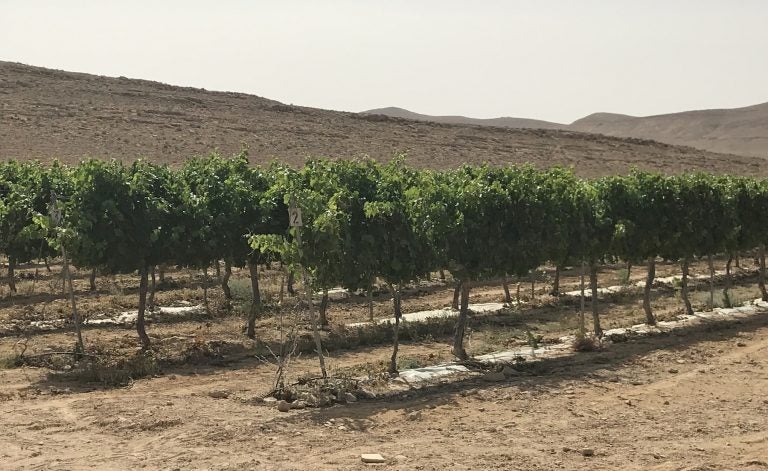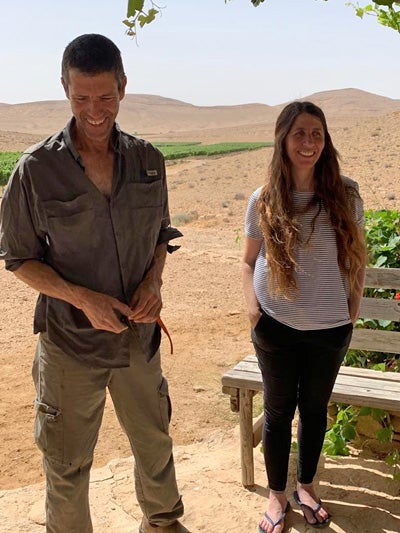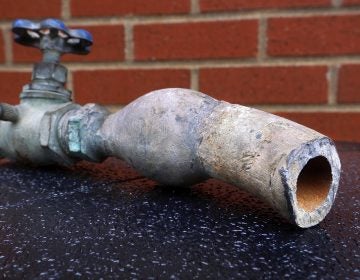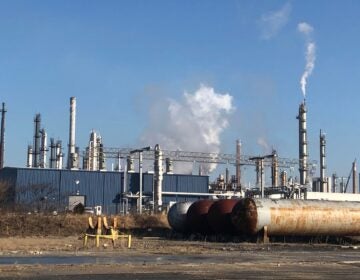Wine grapes grow again in Israel’s Negev desert
Using desert-taming techniques the ancients mastered, a region of Israel sees vineyards flourish.
Listen 05:40
Using desert-taming techniques the ancients mastered, farmers in Israel’s Negev desert are growing wine grapes. (Image courtesy of Ben-Gurion University)
Far from the sandy beaches of the Mediterranean and the nightlife of Tel Aviv, Israel’s Negev desert stretches for about 4,700 square miles south toward the Red Sea, comprising about half of Israel’s land. The dry, crusty soil is dotted with an occasional oasis, or wadi, where the rare rainfall pools enough to support a patch of green in the otherwise stark, brown landscape.
For readers of the Old Testament, it’s where Moses sent his spies to scout out the Promised Land. And it was part of the ancient “Spice Route,” where 2,000 years ago the Nabateans brought frankincense and myrrh from the East, to Mediterranean ports.
Along the way, the Nabateans, and the Byzantines, established vineyards. Today, Israeli farmers have taken advantage of advanced water infrastructure to develop new wineries in this dry environment.
Aaron Fait is an associate professor at Ben-Gurion University of the Negev, and he led a visitor around an experimental vineyard where he does his research. The sun was blistering, there was no shade anywhere, and the hot wind blew relentlessly.
“You can see how majestic this landscape with vineyards [is] in the middle of the desert,” he said as he proudly showed off the vineyard.
Fait said viticulture — or growing grapes for wine — began in this region thousands of years ago even though the area gets almost no rain, just about four inches a year.
“What do you think is a challenge to growing grapes in a desert environment?” he asked. ”Water? The Nabateans didn’t have water, and still they were making a lot of wine here.”
The Nabateans were a nomadic tribe that lived in this area about 2,500 years ago. They built stonewalls or terraces to capture what little rain fell during rare downpours. That way, the water was absorbed by the ground instead of bouncing off of the tough, salty soil.
Today, the farmers have access to advanced irrigation systems. To improve efficiency, plastic sheets hug the plant’s stems and cover the ground to prevent evaporation.
“Now, another challenge of a desert environment is sunlight,” said Fait. “Sunlight is a bad beast indeed.”
Fait is originally from Italy, where, he said, wine is often grown with the vines stretched out in a T-formation. But using that method would create problems in the desert.
“This exposes the berries to too much radiation, to sun radiation in the morning, in the evening, [the grapes] are always battered by the sun.”
That makes for pretty bad wine, he said.
“The fruit becomes brown,” said Fait. “Sunburns start to develop in both red and white varieties, and you lose acidity. So you get these red wines that sit on your tongue like a stone. It’s not fun to drink them.”
So instead, he encourages farmers to grow the vines in a way that the leaves create a canopy of sorts and help shade the grapes.

The other challenge to making good wine in this desert is the salty soil. Israelis wouldn’t drink it, he said: “You can sell it to German tourists and maybe also some Americans in Venice.”
So the solution is making sure the drip irrigation flushes the salt farther down into the ground, beyond the root system.
The desert has its advantages. The lack of rain means farmers don’t have to battle fungi, pests and weeds with toxic herbicides and pesticides. The high temperatures are good for the fruit.
“The Nabateans knew that,” said Fait. “They were exporting wine throughout the Mediterranean from this very region.”
His research has value beyond the Negev, Fait said.
“Researching viticulture in the desert is not just for the sake of the local farmers, but actually it’s kind of a worldwide mission,” he said. “We are in the era of climate change. Eventually, if you feel it, the farmers feel it.”
The vineyards of the Mediterranean basin, including those in the south of France, Italy, and Slovenia, are already dealing with the impacts of climate change, which could include droughts as well as heavy rains, he said.
“The grapevine is not adapted for these sudden changes in climate, and this is what climate change is. The [weather] becomes more and more unpredictable. Sometimes, you have water; sometimes, you don’t have water. So the desert can become a model to study how climate change can affect the wine industry worldwide.”
In a historic land, modern-day challenges
In Israel’s Negev desert, Fait has collaborated with Eran Raz, a farmer who owns Nana Estate Winery, a 60-acre vineyard near the town of Mitzpe Ramon. It’s about a 10-minute drive from the Egyptian border.
Raz’s vineyard looks like a river of deep green that snakes through a valley of tan, desolate earth. There are no trees in sight, aside from those planted near an arbor that shades a wine-tasting area. The trees are watered with irrigation, like the vineyard.
“The first year was quite tough because when I came here there was nothing here,” said Raz. “Just desert. No roads, no water system, I needed to do everything by myself.”
But there were other people using the land. Raz said nomadic Bedouin tribes had turned the ancient Spice Route into a path for modern-day drug smuggling. The new vineyard blocked their way and exposed them.
“They broke the water system again and again, they burned the compost and were smashing the vines all the time.”
Raz decided to sleep out in the vineyard overnight to protect his new crops.
“And they tell me that I need to [leave]. But I didn’t think for a minute to go away from here.”
Raz said the Bedouins offered him a deal: For the price of just 3,000 Israeli shekels, or about $850, they would protect him and his new vineyards. He didn’t take the deal. When a border fence went up to block migrants from crossing the border, it also cut off the drug smuggling route, which freed him up to grow grapes.
As Raz began to cultivate the land, he found history everywhere he looked, including the remnants of the ancient terraces built by the Nabateans. And he said he learned from them. One day after a heavy rainfall replenished a wadi, or dry streambed, he realized how important those terraces were for the Nabateans.
He said he watched as the water carried away the soil through the broken parts of the ancient terrace. Without those stonewalls blocking the flow, and pooling the water, the rain bounces off the hard, dry soil.
“So I understand how important it is to build terraces. So I built all the terraces here again,” he said.
Since then, he hasn’t had any problems with runoff.

But unlike the ancient Nabateans, Raz can tap into a pipeline that brings desalinated seawater from a plant on the Mediterranean about 185 miles away. And that gives him a surprising advantage over other wineries. He gets so little rain that he has almost complete control over how much water his grapes get.
During a wine tasting, Aaron Fait said it’s that water control that makes the wine here so good.
“And, by the way, you are testing now the best Shiraz I ever tasted,” said Fait. “I mean just close your eyes and taste this Shiraz.
“Think about it. Is there another crop where you can control conditions and get such a deep diversified feeling? I mean, there is no other crop like wine. Apples for apple juice or applesauce? Whatever. Tomatoes? Meh.”
Raz said he was drawn to grow grapes in this desolate environment because of its legacy, which he finds just walking through his vineyards.
“It’s got history,” he said. “You can find in the Bible that people grow grapes and drink wine.”
And it’s that history that drives him to turn the desert into wine.
WHYY is your source for fact-based, in-depth journalism and information. As a nonprofit organization, we rely on financial support from readers like you. Please give today.







